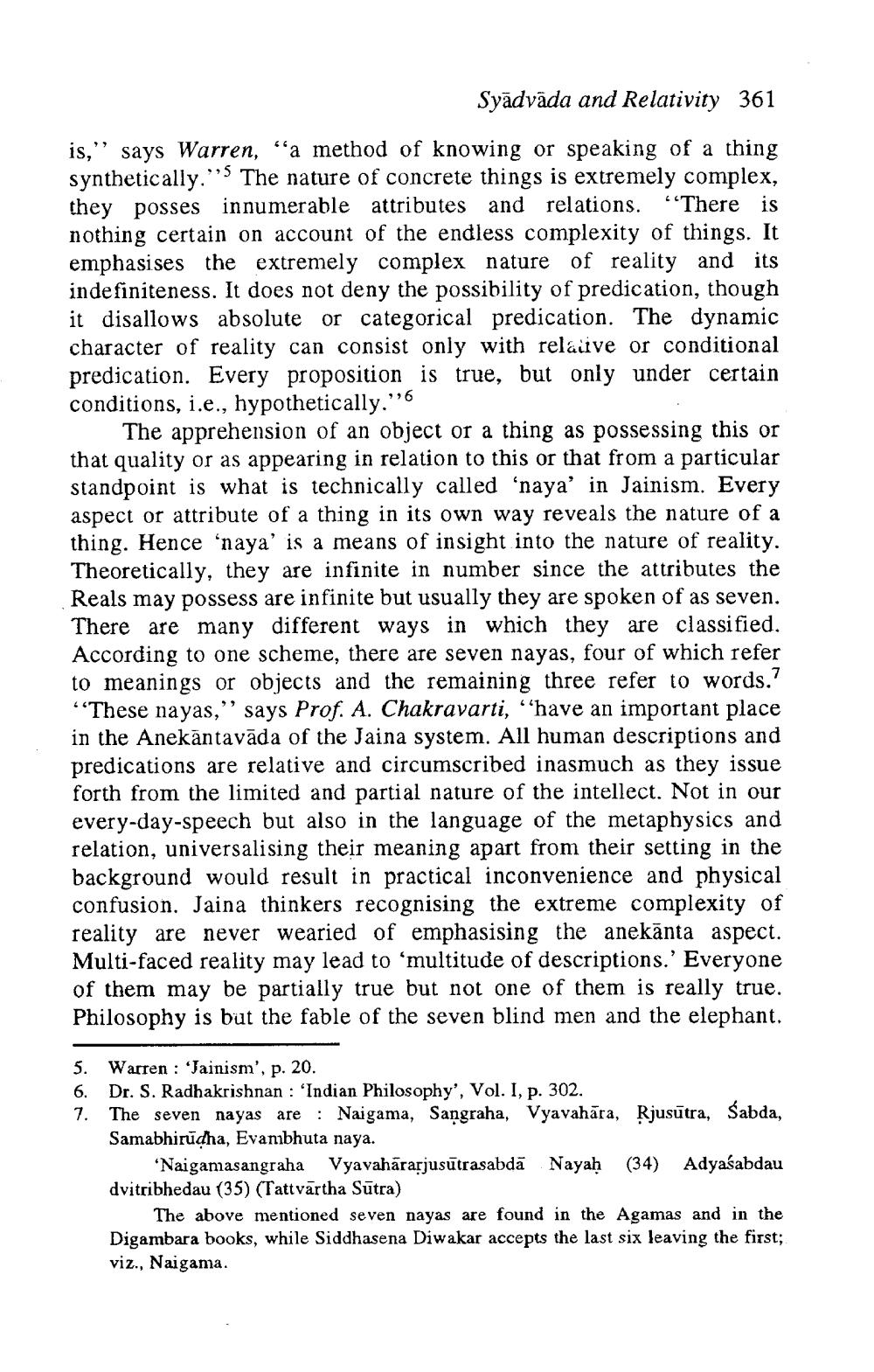________________
Syādvāda and Relativity 361
is," says Warren, “a method of knowing or speaking of a thing synthetically.''S The nature of concrete things is extremely complex, they posses innumerable attributes and relations. “There is nothing certain on account of the endless complexity of things. It emphasises the extremely complex nature of reality and its indefiniteness. It does not deny the possibility of predication, though it disallows absolute or categorical predication. The dynamic character of reality can consist only with relaiive or conditional predication. Every proposition is true, but only under certain conditions, i.e., hypothetically.”6
The apprehension of an object or a thing as possessing this or that quality or as appearing in relation to this or that from a particular standpoint is what is technically called 'naya' in Jainism. Every aspect or attribute of a thing in its own way reveals the nature of a thing. Hence 'naya' is a means of insight into the nature of reality. Theoretically, they are infinite in number since the attributes the Reals may possess are infinite but usually they are spoken of as seven. There are many different ways in which they are classified. According to one scheme, there are seven nayas, four of which refer to meanings or objects and the remaining three refer to words.? “These nayas," says Prof. A. Chakravarti, “have an important place in the Anekāntavāda of the Jaina system. All human descriptions and predications are relative and circumscribed inasmuch as they issue forth from the limited and partial nature of the intellect. Not in our every-day-speech but also in the language of the metaphysics and relation, universalising their meaning apart from their setting in the background would result in practical inconvenience and physical confusion. Jaina thinkers recognising the extreme complexity of reality are never wearied of emphasising the anekānta aspect. Multi-faced reality may lead to 'multitude of descriptions.' Everyone of them may be partially true but not one of them is really true. Philosophy is but the fable of the seven blind men and the elephant.
5. Warren : 'Jainism', p. 20. 6. Dr. S. Radhakrishnan : 'Indian Philosophy', Vol. I, p. 302. 7. The seven nayas are : Naigama, Sangraha, Vyavahāra, Rjusūtra, Sabda, Samabhirudha, Evanbhuta naya.
"Naigamasangraha Vyavahārarjusūtrasabdā Nayah (34) Adyaśabdau dvitribhedau (35) (Tattvārtha Sūtra)
The above mentioned seven nayas are found in the Agamas and in the Digambara books, while Siddhasena Diwakar accepts the last six leaving the first; viz., Naigama.




